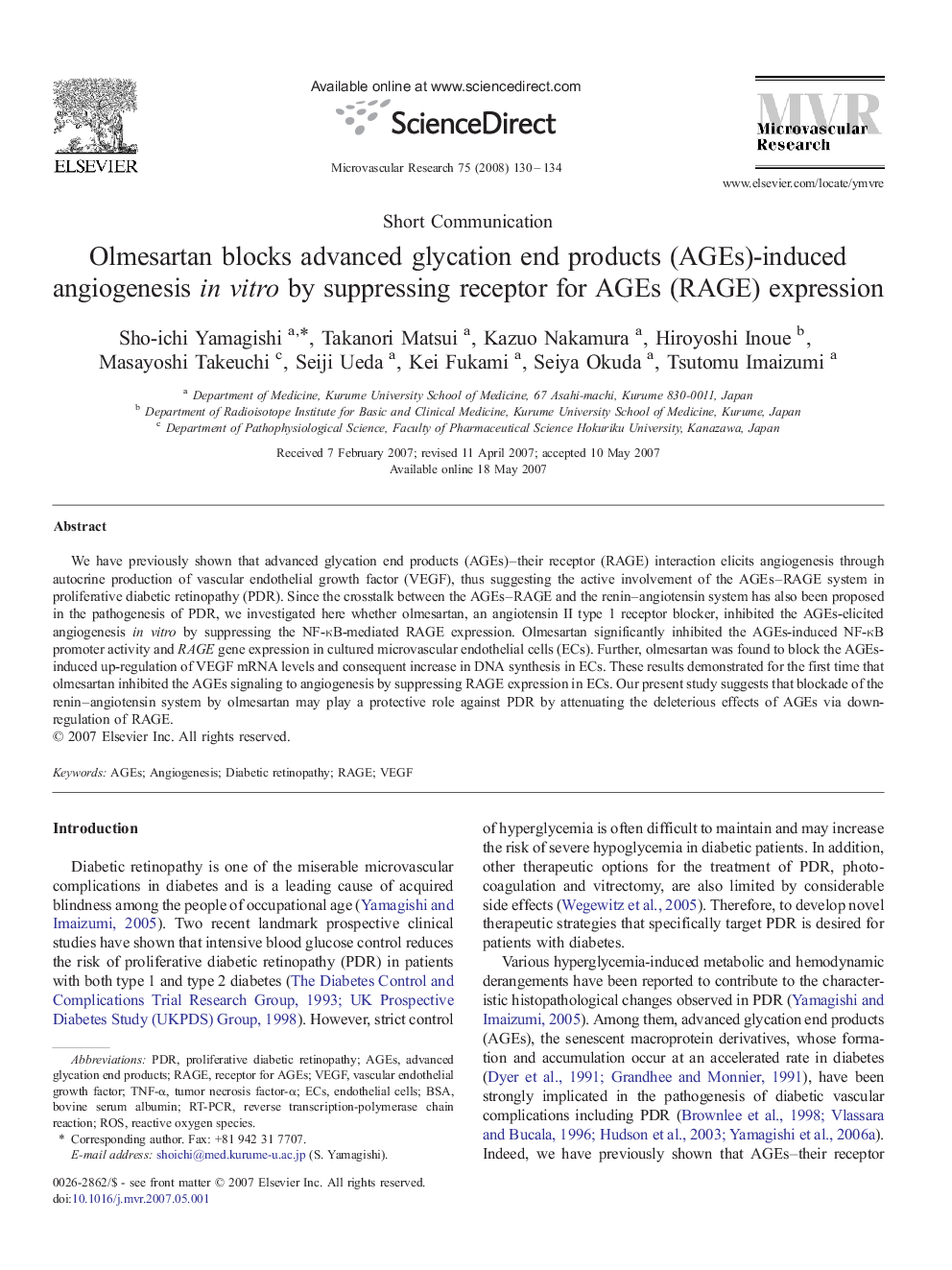| Article ID | Journal | Published Year | Pages | File Type |
|---|---|---|---|---|
| 1995267 | Microvascular Research | 2008 | 5 Pages |
We have previously shown that advanced glycation end products (AGEs)–their receptor (RAGE) interaction elicits angiogenesis through autocrine production of vascular endothelial growth factor (VEGF), thus suggesting the active involvement of the AGEs–RAGE system in proliferative diabetic retinopathy (PDR). Since the crosstalk between the AGEs–RAGE and the renin–angiotensin system has also been proposed in the pathogenesis of PDR, we investigated here whether olmesartan, an angiotensin II type 1 receptor blocker, inhibited the AGEs-elicited angiogenesis in vitro by suppressing the NF-κB-mediated RAGE expression. Olmesartan significantly inhibited the AGEs-induced NF-κB promoter activity and RAGE gene expression in cultured microvascular endothelial cells (ECs). Further, olmesartan was found to block the AGEs-induced up-regulation of VEGF mRNA levels and consequent increase in DNA synthesis in ECs. These results demonstrated for the first time that olmesartan inhibited the AGEs signaling to angiogenesis by suppressing RAGE expression in ECs. Our present study suggests that blockade of the renin–angiotensin system by olmesartan may play a protective role against PDR by attenuating the deleterious effects of AGEs via down-regulation of RAGE.
